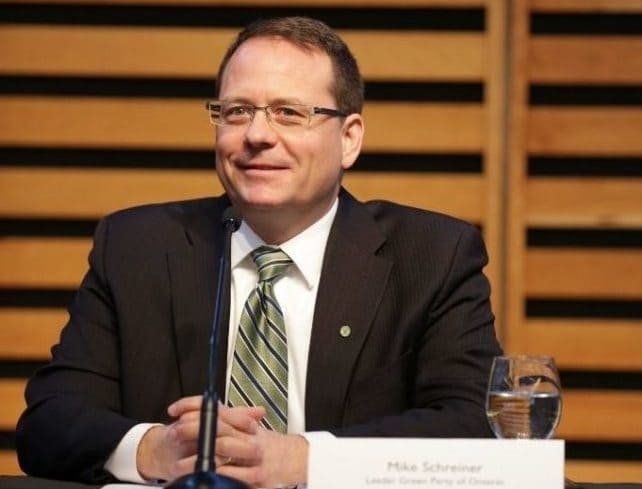
The Ontario Green Party is working on a comprehensive revenue tool package that will help fund infrastructure and transit projects throughout the province. The package will include a plethora of options for drivers and transit users, including the use of tolls and congestion charges in addition to uploading the cost of maintaining and operating the Don Valley Parkway and the Gardiner Express back to the province.
“One of the biggest challenges facing the GTHA is gridlock,” says party leader Mike Schreiner. “It affects our economy to the tune of $6 billion in lost productivity.”
According to Schreiner, the Green Party is willing to do something other political parties are not — explain honestly and openly what it will take to improve transit and quality of life in cities across Ontario.
“This is a situation where political self-interest is trumping the people’s interest,” he says. “There is a myth that somehow all this infrastructure is going to be built. Imagine if our great grandparents hadn’t paid for dams in Niagara Falls that generates electricity … or hadn’t agreed to pay for the cost of the 400 series highways that enabled us to ship goods to province and the US. It’s time for our generation to step up to plate and fund transit infrastructure desperately needed.”
As part of this plan, the Green Party is supporting dynamic tolling, where drivers are charged a larger cost for using certain roadways like the Gardiner and DVP during on-peak hours and less (or not at all) during off-peak hours. The hope is that this will encourage those who can use transit, to do so, and those who must drive, to carpool.
“A toll taxes people regardless of time of day when real problem is rush hour,” says Tim Grant, Green Party shadow cabinet minister for transportation. “The dynamic road pricing – although it sounds harsh at first glance – is really fair and equitable. It acknowledges that there is a higher cost to discourage drivers in rush hours.”
The money collected from these tolls would be dedicated to transit, ensuring that those who choose to use alternative modes of transportation are able to use a modern and well-maintained system. It’s a win-win scenario — the challenge is to convince people the long-term benefits are worth the cost.
“If you reduce traffic congestion, people have a higher quality of life,” Grant says. “Air pollution is reduced, fuel economy is reduced, which leads to higher air quality and more time on [drivers] hands.”
Grant says the problem with the current funding provided by both the provincial and federal governments to municipalities for infrastructures is that it only pays for the initial planning and construction of a transit project, but not to operate or maintain it. This results in poorer service and low ridership.
Another aspect of the Green Party’s revenue plan is to upload the costs of operating and maintaining the DVP and Gardiner Expressway back to the province, something that was promised over 10 years ago. This would free up a couple billion dollars worth of funding the City of Toronto could use to build better transit infrastructure and maintain other roads within the city.
The key, both Schreiner and Grant say, is to actually listen to experts and communicate that information honestly to the public, without political agenda.
“Part of the problem is that political parties prepare their platform and policies based on a calculation of what voters think – and it’s a sad state because the alternative is for a political leader to go out and be honest and say, you won’t like this, but you will love it afterwards,” Grant said. “It needs political leadership willing to get out in front of all this and say we are doing this because people will get to work faster, kids will have better transit, and this will be a benefit. Vote for me or not – but I will try to make life better.”
The Green Party will discuss their platform and comprehensive revenue package in May in preparation for the 2018 election.
